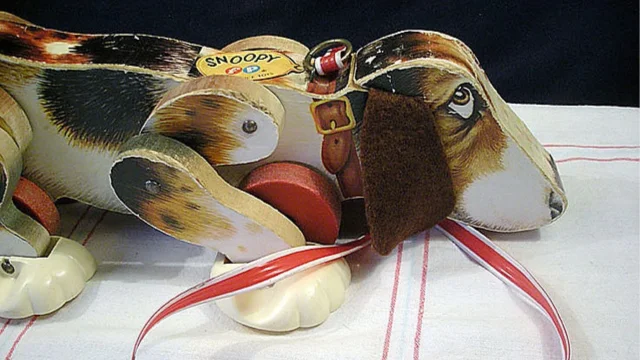Embracing Crusty White Dogs: Advocating for Respect, Care, and Understanding

In the world of pet companionship, some terms like “crusty white dogs” have unfortunately become synonymous with jest rather than appreciation. These dogs, often breeds with luxurious fur and expressive eyes, are prone to developing tear stains or eye crust. As someone who proudly shares life with a crusty white dog, I’ve come to adore their unique charm and the misconceptions they often face. This blog aims to shed light on these beloved companions, advocating for respect, proper care, and dispelling myths surrounding their condition.
Understanding Tear Stains and Eye Care
“Crusty white dogs” are predisposed to tear stains due to their anatomy. Similar to humans, their tear ducts produce tears throughout the day, which can accumulate alongside natural oils and debris around their eyes. This results in eye crust, a mixture of dried tears, oil, mucus, dead cells, and dust, typically appearing as clear or reddish-brown residue. While this is a common occurrence, excessive eye crust may indicate underlying health issues such as allergies, infections, or structural abnormalities like entropion.
Explore: A Day in Dog-Friendly Gulfport, FL: A Pooch-Perfect Paradise
Medical Issues and Care
Proper care for crusty white dogs involves understanding their unique needs. Regular grooming, including gentle cleaning around the eyes and using vet-recommended tear stain removers, helps manage tear stains and prevent potential infections. It’s crucial to consult with a veterinarian to ensure any serious conditions are addressed promptly and to receive appropriate treatment. Responsible pet ownership includes vigilance in monitoring your dog’s health and seeking professional advice for any concerning symptoms.
Managing Tear Stains: Considerations for Crusty White Dogs
Many pet owners of crusty white dogs often wonder about the effectiveness of various home remedies or over-the-counter products for managing tear stains. While some products may help lighten tear stains temporarily, it’s essential to approach them with caution and under veterinary guidance. Not all products are suitable for every dog, and some may contain ingredients that could potentially irritate sensitive eyes. Veterinary advice ensures that the chosen products are safe and effective for your dog’s specific needs, providing peace of mind in caring for your beloved crusty white companion.
Personal Experiences with Crusty White Dogs
Many individuals have heartwarming stories about their interactions with crusty white dogs. My neighbor, for instance, shares a home with a delightful Maltese named Bella. Despite Bella’s occasional eye crust, she is a bundle of joy, always eager to greet everyone with her wagging tail and affectionate demeanor. Witnessing Bella’s resilience and the bond she shares with her family has deepened my appreciation for these endearing pets.
Nature and Personality
Beyond their physical appearance, crusty white dogs boast endearing qualities that make them cherished companions. They are often known for their loyalty, affection, and playful demeanor. Despite occasional health challenges, these dogs exhibit resilience and bring immense joy to their families. My own crusty white dog, [Dog’s Name], has taught me empathy and patience, enriching my life in ways I never anticipated.
Advocating for Respect
As advocates for these delightful creatures, it’s our duty to educate others about crusty white dogs and foster empathy and respect. These dogs deserve recognition for their unique traits and compassionate care. By dispelling myths and promoting understanding, we can cultivate a more inclusive community of pet lovers who appreciate and celebrate all pets, regardless of appearance or perceived imperfections.
Conclusion
In conclusion, crusty white dogs are more than just a meme or stereotype; they are cherished members of our families who merit our respect and attentive care. By embracing their distinctive beauty, understanding their medical needs, and celebrating their nature, we can create a world where every pet receives the love and dignity they deserve. Let’s stand together in advocating for the well-being and appreciation of crusty white dogs and all pets alike.
FAQs
Why do crusty white dogs develop tear stains?
Crusty white dogs, with their longer fur and prominent eyes, are prone to tear stains due to tear ducts that produce tears throughout the day. These tears can mix with natural oils and debris, leading to the formation of eye crust or tear stains around their eyes.
Are tear stains in crusty white dogs a cause for concern?
While some degree of tear staining is normal, excessive or persistent tear stains may indicate underlying health issues such as allergies, infections, or structural eye problems like entropion. It’s important to monitor and manage tear stains to prevent potential complications.
How can I manage tear stains in my crusty white dog?
Proper grooming practices, including gentle cleaning around the eyes with vet-approved products, can help manage tear stains. Additionally, consulting with a veterinarian for recommendations on tear stain removers and addressing any underlying health conditions is essential.
What are common health issues that crusty white dogs may face?
Crusty white dogs may be susceptible to eye infections, allergies, and structural eye problems like entropion, which can contribute to tear staining. Regular veterinary check-ups and prompt treatment of any health concerns are crucial for maintaining their well-being.
Do crusty white dogs require special care compared to other breeds?
es, crusty white dogs may require extra attention to eye care due to their predisposition to tear stains. This includes regular grooming, monitoring for signs of eye irritation or infection, and consulting with a veterinarian for personalized care advice.






